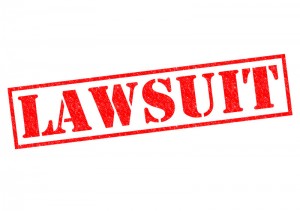 Graphics and pictures are a great way to enhance your social media engagement for your private mental health practice. They add something that words cannot, they show personality, they can break up large blocks of text, and they add visual interest. However, in our Internet age, there is a very real danger of getting into trouble if you use an unauthorized photo. The owner of the image(s) can slap you with a fine or a law suit.
It's easy to disregard copyright rules, particularly if you are a small business owner. Some assume that if their blog is not a commercial site or monetized by running advertisements, then they can use any image without fear of legal penalty. And there are millions of blogs out there, so why would anyone care about an image or two you use on yours? The truth is that photo companies have software that crawls the web looking for their private images, and they’re not afraid to get you if you violate their rules. It happens a lot. It even happened to me. Moral of the story? Respect copyright laws.
Graphics and pictures are a great way to enhance your social media engagement for your private mental health practice. They add something that words cannot, they show personality, they can break up large blocks of text, and they add visual interest. However, in our Internet age, there is a very real danger of getting into trouble if you use an unauthorized photo. The owner of the image(s) can slap you with a fine or a law suit.
It's easy to disregard copyright rules, particularly if you are a small business owner. Some assume that if their blog is not a commercial site or monetized by running advertisements, then they can use any image without fear of legal penalty. And there are millions of blogs out there, so why would anyone care about an image or two you use on yours? The truth is that photo companies have software that crawls the web looking for their private images, and they’re not afraid to get you if you violate their rules. It happens a lot. It even happened to me. Moral of the story? Respect copyright laws.
Here are three suggestions for safely using images on your website:
1) Use a Stock Photography Website
These sites have thousands of images to browse so that you'll be able to find some that portray what you're looking for. There are lots of sites to choose from: Shutterstock, BigStock, and CanStock are some well-known names (I personally use Canstock). This is an investment, but it's a reasonable and worthwhile one. Here's how Canstock works: you sign up for a package of "credits," which are points to use an image. If I were to buy the 100 credit package, I'd pay $50 and would be able to "buy" the rights to use an image with my credits (most photos are 2-3 credits). There are different credit packages available to give you the best deal depending on how often you utilize images. I encourage you to research Canstock and the other companies and decide which one will work best for your business and your budget.
2) Take Your Own Pictures!
Why not create your own images? Maybe you’re a photography buff, maybe you’re not, but nowadays, it’s easier than ever to capture clean and beautiful photos with an iPhone or other simple device. Take a picture of your therapy office, something in nature that inspires you, or anything else that relates to your online presence. Use your imagination (and your common sense!) and tap into your creative side. Best part? No worrying about legal consequences!
3) Use Public Domain Images
There are some photos online that are actually totally free. Yep, the owners have decided that anyone can use them, making them fair use images. Hallelujah! Here are 3 popular sites with great free images:
Death to the Stock Photo I love the tongue-in-cheek name, here. This site actually emails you free images every month. There really are some beautiful ones here, and there's a different theme every month.
Unsplash Unsplash is another one with free, high quality photos. Not quite as many to choose from, but there are always new ones being added, so you might be able to find what you're looking for.
morgueFile Strange name, I know. Here are even more great stock photos where you don't need to worry about licensing or copyrighting issues.
4) Get Permission to Use an Image Through Creative Commons
Sometimes, you find an image on Google that fits perfectly for what you're looking for, but since it's not public domain, you cannot legally use it. In these cases, you may be able to get permission from the owner through what is called a creative commons license. This is a tool to connect someone who wants to use a photo with the person or company that supplies it and help them come to a reasonable agreement that is in compliance with the law. For example, you might be granted permission to use an image on your site, but not on a newsletter or book. It's up to the copyright holder what sort of license they give. Creative commons licenses can get pretty complex; click here for more specific details about it.
So yes, images are becoming increasingly important when you build your online presence, but you must take precaution and protect yourself. Once again, I urge you to take copyright rules seriously in order to avoid landing yourself in hot water. By using these techniques, you'll be able to create visual content for your online presence and keep yourself safe from any expensive and messy copyright violations.
Click here for more about going graphic/ using images to enhance your online presence.
Get practice tips and blog updates in your inbox. Sign up for the Private Practice Toolbox Newsletter here
Join my Private Practice Toolbox Facebook group and connect with 2600 therapists around the globe in 2 simple steps: 1) Click request to join the group and 2) Fill out this brief questionnaire before you'll be added to the group.

As healers, we genuinely like to do our work. Guiding clients through the therapy process and seeing them make progress is why we do what we do. But if you're in private practice, you know there's a lot going on in the back end and that it's crucial to run an efficient and organized business.